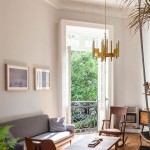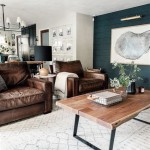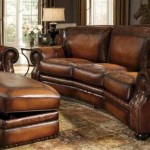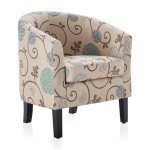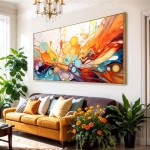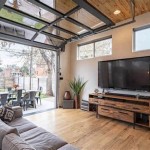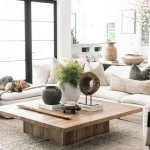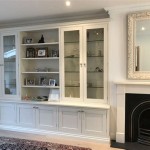What Is Boho Style Living Room?
The boho style living room, short for bohemian, represents an aesthetic that embraces the unconventional, artistic, and free-spirited. It's more than just a decorating trend; it is a lifestyle expressed through interior design. Characterized by its relaxed atmosphere, eclectic mix of elements, and personalized touches, a boho living room fosters a sense of warmth, comfort, and individuality. This style deviates from rigid design rules, encouraging a unique blend of textures, patterns, colors, and cultural influences.
Originating in the 19th century with artists, writers, and nomads who chose to live an unconventional life, the bohemian aesthetic gradually extended beyond lifestyle into art and design. It reflects a worldview that values experiences over possessions, creativity over conformity, and self-expression over adherence to social norms. The modern interpretation of boho style maintains this spirit while incorporating elements suitable for contemporary living.
A true boho living room is more than just a collection of trendy items; it's a reflection of its inhabitant's journey, passions, and personality. It is a space where stories are told through carefully curated pieces, each holding its own history and significance. The key to successfully creating a boho living room lies in understanding the core principles of the style and translating them into a cohesive and personalized design.
Key Elements of a Boho Living Room: Textures and Textiles
One of the defining characteristics of boho style is the layered use of textures and textiles. This creates depth, visual interest, and a tactile experience that contributes to the room's overall comfort and inviting atmosphere. Think beyond the standard sofa and coffee table; consider the interplay of different materials and how they interact with each other.
Natural fibers are fundamental. Rugs made from jute, sisal, or wool provide a grounding element and introduce a raw, earthy feel. These natural materials contrast beautifully with softer textiles like velvet, silk, and linen. Layering rugs can add even more texture and visual complexity, creating distinct zones within the living room.
Cushions and throws are essential for creating a cozy and inviting space. Opt for a variety of sizes, shapes, and textures. Consider incorporating embroidered pillows, macramé cushions, and patterned throws. These textiles not only add comfort but also contribute to the room's visual tapestry. Don't be afraid to mix and match patterns and colors; the key is to create a harmonious yet eclectic blend.
Wall hangings, such as tapestries, macramé art, and woven pieces, further enhance the tactile nature of the room. These elements add visual interest and can serve as focal points. Consider using vintage textiles or pieces sourced from travels to add a personal touch and tell a story.
Furthermore, the use of curtains is also important. Instead of heavy, opaque curtains, consider lighter, more breathable fabrics like linen or cotton. These materials allow natural light to filter into the room, creating a bright and airy atmosphere. Sheer curtains can also be used to add a touch of privacy without blocking out the light completely. Consider curtains with tassels, embroidery, or other details to enhance the bohemian aesthetic.
Pay attention to the details. Consider incorporating elements like tassels, fringe, and pom-poms into your textiles. These small details can add a playful and whimsical touch to the room. Remember, the goal is to create a space that feels comfortable, inviting, and visually stimulating through the strategic use of textures and textiles.
Color Palette and Patterns in Boho Style
The color palette of a boho living room is typically warm, earthy, and inviting, reflecting the natural world. While there are no strict rules, certain colors are frequently associated with this style. Neutrals, such as beige, cream, and white, form the foundation of the color scheme, providing a calming and versatile backdrop. These neutral tones allow other, more vibrant colors to stand out without overwhelming the space.
Accents of earthy tones, such as browns, terracotta, and greens, are essential for grounding the space and creating a connection to nature. These colors can be incorporated through furniture, accessories, and textiles. Consider using natural materials like wood, leather, and rattan to further emphasize the earthy feel.
Bold and vibrant colors, such as jewel tones, add pops of personality and energy to the room. Think deep blues, emerald greens, rich purples, and vibrant reds. These colors can be incorporated through throw pillows, rugs, artwork, and accessories. The key is to use them strategically to create visual interest without overpowering the space. A well-chosen accent wall can also be a dramatic way to introduce a bold color.
Patterns are another essential element of boho style. Geometric patterns, such as tribal prints, Moroccan designs, and Aztec motifs, are commonly used. Floral patterns, especially those with a vintage or hand-drawn feel, can also be incorporated. The key is to mix and match patterns in a way that feels cohesive and intentional.
Don't be afraid to layer patterns and textures to create visual depth and interest. For example, you could pair a geometric rug with a floral throw pillow and a macramé wall hanging. The key is to choose patterns and colors that complement each other and create a harmonious overall aesthetic.
Consider using natural dyes and handmade textiles to add an authentic touch to your boho living room. These elements not only add visual interest but also contribute to the room's overall sense of warmth and character. Natural dyes often produce unique and subtle variations in color, which can enhance the room's overall aesthetic.
Ultimately, the color palette and patterns you choose for your boho living room should reflect your personal taste and create a space that feels comfortable, inviting, and inspiring. Experiment with different combinations of colors and patterns until you find a look that you love. Remember, the goal is to create a space that is uniquely your own.
Furniture and Decor in a Boho Living Room
Furniture choices in a boho living room prioritize comfort, functionality, and a sense of history. Avoid matching sets and embrace eclectic pieces that reflect a diverse range of styles and eras. Vintage and antique furniture are often favored for their unique character and patina, adding a sense of authenticity and story to the space.
Low-slung sofas and comfortable armchairs are essential for creating a relaxed and inviting atmosphere. Opt for pieces with plush cushions and soft upholstery in natural fabrics like linen or cotton. Consider adding a daybed or floor cushions for additional seating options, creating a more casual and laid-back vibe.
Coffee tables made from natural materials, such as wood, rattan, or wicker, are common in boho living rooms. Consider using a vintage trunk or a stack of books as a coffee table for a unique and personalized touch. Side tables, consoles, and shelves provide additional storage and display space. Look for pieces with interesting details, such as carved wood, brass accents, or vintage hardware.
Plants are an integral part of a boho living room, bringing life, color, and a sense of connection to nature. Incorporate a variety of plants, from small succulents and cacti to large leafy plants like ferns and palms. Hang plants from macramé hangers, place them on shelves, or display them in decorative pots and baskets.
Artwork and decorative objects play a crucial role in personalizing a boho living room. Display artwork that reflects your personal taste and style, such as paintings, prints, photographs, and sculptures. Consider incorporating pieces sourced from travels or local artists to add a unique and authentic touch.
Mirrors are also important for adding light and depth to the space. Use a large statement mirror as a focal point, or arrange a collection of smaller mirrors on a wall. Mirrors can also be used to reflect light and create the illusion of more space.
Lighting is essential for creating a warm and inviting atmosphere. Use a combination of ambient, task, and accent lighting to create a layered and dynamic lighting scheme. String lights, lanterns, and candles can also be used to add a touch of romance and whimsy.
Personal touches are what truly make a boho living room unique and special. Display items that reflect your personal interests and passions, such as books, musical instruments, collections, and travel souvenirs. These items tell a story about who you are and what you love, creating a space that feels authentic and personal.
The key to creating a successful boho living room is to embrace eclecticism, experiment with different styles and textures, and personalize the space with elements that reflect your unique personality and taste. Don't be afraid to break the rules and create a space that is truly your own.

20 Boho Living Room Ideas For A More Relaxed Home
:max_bytes(150000):strip_icc()/casawatkinslivingroombohemian-5509dcd31b074ad4bdcc4869acb678c4.jpeg?strip=all)
24 Boho Style Living Room Design And Decor Ideas

How To Add Boho Vibe Your Living Room

20 Boho Living Room Ideas For A More Relaxed Home

Boho Room Decor Ideas For A Carefree Home Fibreguard

Trendy Bohemian Style Decor For Every Room Of Your Home Decorilla Online Interior Design

What Is Boho Farmhouse Style American

Home File Modern Boho Decor Kp Fusion
6 Boho Chic Living Room Decor Ideas Lick

25 Cute Modern Boho Living Room Ideas Nikki S Plate

